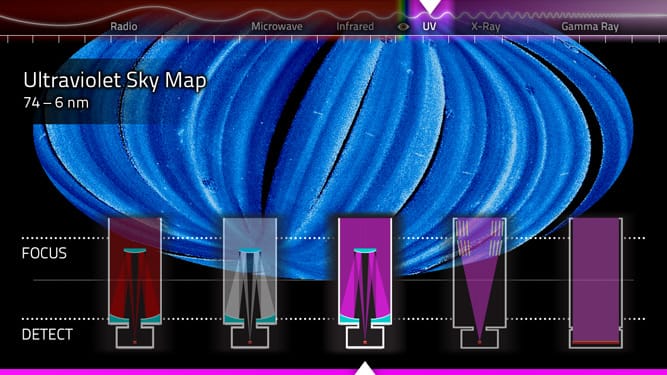Astronomers have made a groundbreaking discovery that has unveiled a stunning aspect of the early universe. Using advanced telescopes, including the Low Frequency Array (LOFAR), scientists have detected the largest radio jet ever recorded, emanating from a quasar located approximately 12 billion light-years away. This monumental finding not only highlights the incredible power of early quasars but also provides a revealing snapshot into a formative period of cosmic history.
The radio jet, a dramatic beam of electromagnetic radiation, is a result of intense activity surrounding the supermassive black hole at the quasar’s core. The term “quasar” refers to extremely bright celestial objects powered by black holes situated at the centers of galaxies. The newly observed jet spans an astonishing 200,000 light-years, making it twice the length of our own Milky Way galaxy. Such an extraordinary structure indicates that even during the universe’s infancy—when it was less than 10% of its current age—these massive phenomena were forming and thriving.
What makes this discovery particularly compelling is its implication for our understanding of the universe’s evolution. Scientists estimate that the light we now observe from this quasar began its journey nearly 12 billion years ago, capturing a glimpse into a time when the cosmos was only about 1.2 billion years old. This period marked the end of the “cosmic dark ages” and saw the burgeoning of galaxies, stars, and black holes.
The radio jet was first discovered during surveys conducted by LOFAR, a unique network of antennas spread across Europe that specializes in detecting low-frequency radio waves. Its position and size were later confirmed and analyzed using additional ground-based and space-based observatories, showcasing the collaborative nature of modern astronomical research.
Historically, detecting such massive radio jets in the early universe has been challenging due to interference from the cosmic microwave background—a pervasive remnant of the Big Bang. However, recent advancements in technology and methodologies have enabled astronomers to overcome these obstacles. By studying the detected radio jet’s extraordinary scale and structure, researchers hope to gain deeper insights into how supermassive black holes grow and influence their host galaxies.
The findings also have important implications for our understanding of radio-loud quasars, which comprise only about 10% of the known quasar population. Unlike their quieter counterparts, these distant giants produce radio emissions strong enough to outshine their galaxies in specific wavelengths. The mechanisms behind these jets involve the interaction of magnetic fields and particles accelerated at nearly the speed of light—a phenomenon still not entirely understood, especially at scales as large as those observed in this discovery.
Another significant element of this observation is the role of advanced computing in astronomical studies. Sophisticated algorithms and machine learning models were utilized to analyze vast amounts of data gathered by LOFAR and other instruments. This approach allowed scientists to pinpoint signals of interest amidst a backdrop of cosmic noise, enabling discoveries that would otherwise remain hidden.
Furthermore, observing the largest-known early-universe radio jet opens opportunities to study how such features interacted with their surroundings. Radio jets are known to play a vital role in shaping and regulating the growth of galaxies. They release immense amounts of energy into their environment, often disrupting star formation but also possibly fueling activity in surrounding regions.
The quasar’s discovery serves as a stark reminder of the dynamic and chaotic conditions during the early universe. While the details of its formation and evolution will continue to be topics of extensive study, the monumental scale of the structure offers a remarkable testament to the vastness and diversity of cosmic phenomena.
In the coming years, next-generation telescopes like the Square Kilometre Array (SKA) and advancements in space exploration technologies promise to delve deeper into the mysteries revealed by such discoveries. By studying objects from the early universe, astronomers can piece together a more complete picture of how the cosmos evolved from a hot, dense state following the Big Bang to the vast and complex expanse observed today.
In summary, the detection of this colossal radio jet is more than an astronomical marvel—it is a key to understanding the primordial forces that shaped the universe. It provides evidence of the intricate interplay between supermassive black holes, galaxies, and the broader cosmic environment during a critical epoch in cosmic history. As we expand the reach of scientific inquiry, these discoveries will continue to illuminate our knowledge of the universe’s origins and ongoing evolution.



